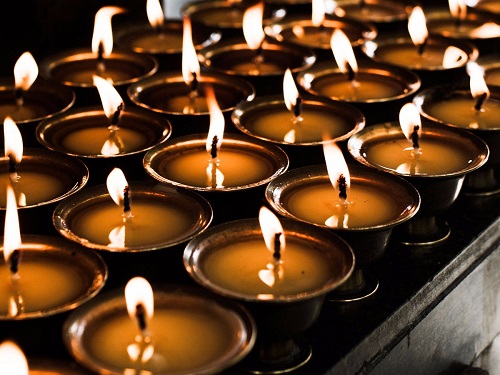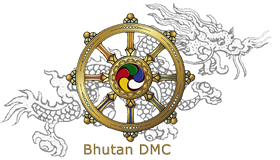Butter Lamps
Butter lamps is one of the main offerings that Buddhist practice but not unique to Buddhist alone. In fact, it is an ancient Indian religious practice.
Buddhist consider ignorance, lack of wisdom and lack of knowledge as the main source of all our problems. The biggest challenge the world faces is ignorance and ignorance is often presented or metaphorically portrayed as darkness. To get rid of ignorance or darkness is the best thing one can do, it to lit the lamp. The offering of butter lamp is the offering of wisdom and light of knowledge to eradicate darkness or ignorance. 
In a world where there was no electricity, one of the best things one could give someone is light, which has less smoke, less contamination and less pollution, which is the light from butter or oil. Other forms of creating light such as from firewood or coal emits pollutants. In this way, one creates light but also creates darkness, which is not pure as lighting a butter lamp. In that context, where there was no electricity butter lamp offering was a pure gift one could offer to the Buddha whom Bhutanese cherish and respect. It is a most precious gift one can offer.
The whole process of offering butter lamp is also a very spiritual practice. The traditional practice of preparing a butter lamp starts from washing one’s hand, wearing a mask to protect from contaminating the butter lamp through one’s breadth, making the wick out of pure cotton and cleaning the butter out of the chalice with a reserved specific clean piece of cloth. The whole process is meditative, that draws one in both physically and mentally, and a spiritual practice if one can understand and practice it according to the norms.
One simply doesn’t go and light a butter lamp, one should pray ‘as I lit this butter lamp I am lighting a wisdom for the world, I am dispelling the darkness of the world by dispelling the darkness in this room’. Then one can visualize the whole world of universe contained in the butter lamp, where the butter is the nectar or ambrosia and while lighting the butter lamp one is dispelling the darkness from the whole universe. Once the butter lamp is lit one should focus on the flickering flame and realise how impermanent life is, how everything is inter-dependent where there is chalice to hold the butter, the butter have to be of the right temperature to be of use, the wick have to be of the right texture and grip, the butter have to flow up through the wick and then with match sticks to trigger the flame. The whole combination of things, giving rise to light, reminds one of theory of dependence, which is a central Buddhist concept. One shouldn’t be stuck with thinking that one is real or things are different but understand the fluid nature of things by looking at things such as the flickering of a flame from a butter lamp. When second flame is lit, the second flame doesn’t bring the flame from the first one. The first flame can continue being alight but the second one can’t come into existence without carrying on the flame from the first one. It’s the same with third, fourth, fifth and so on and it shows the process of cycle and how existence evolves in this manner. This is a very important Buddhist understanding as well.
After lighting the butter lamp, there are lots of prayers one can chant. The most popular of all is the marmey moenlam. The final prayer is dedicating the merit one has accumulated during the practice to free all sentient beings from darkness.
HOTELS IN THIMPHU
HOTELS IN PUNAKHA & WANGDUE
HOTELS IN GANGTEY
HOTELS IN TRONGSA
HOTELS IN BUMTHANG
HOTELS IN MONGAR
HOTELS IN TRASHIGANG
HOTELS IN SAMDRUP JONGKHAR
HOTELS IN PHUENTSHOLING
HOTELS IN HAA
HOTELS IN GELEPHU
HOTELS IN ZHEMGANG
RESTAURANTS IN PARO
RESTAURANTS IN THIMPHU
RESTAURANTS IN PUNAKHA
TOUR ITINERARIES
TREKKING ITINERARIES
SPECIAL INTERESTS TOURS
UNIQUE FESTIVALS & FAIRS
BLOG


